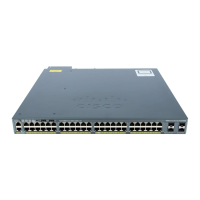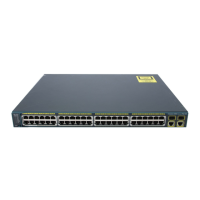Creating Port-Channel Logical Interfaces, on page 126
Channel Groups and Port-Channel Interfaces, on page 109
PAgP Modes , on page 111
Silent Mode, on page 112
Configuring the Physical Interfaces, on page 127
Channel Groups and Port-Channel Interfaces, on page 109
PAgP Modes , on page 111
Silent Mode, on page 112
Configuring EtherChannel Load-Balancing
Load-Balancing and Forwarding Methods, on page 115
MAC Address Forwarding, on page 116
IP Address Forwarding, on page 116
Load-Balancing Advantages, on page 117
Configuring the PAgP Learn Method and Priority, on page 130
PAgP Learn Method and Priority, on page 112
Configuring the LACP System Priority, on page 132
Configuring the LACP Port Priority, on page 133
Layer 2 EtherChannel Configuration Guidelines
When configuring Layer 2 EtherChannels, follow these guidelines:
•
Assign all ports in the EtherChannel to the same VLAN, or configure them as trunks. Ports with different
native VLANs cannot form an EtherChannel.
•
An EtherChannel supports the same allowed range of VLANs on all the ports in a trunking Layer 2
EtherChannel. If the allowed range of VLANs is not the same, the ports do not form an EtherChannel
even when PAgP is set to the auto or desirable mode.
•
Ports with different spanning-tree path costs can form an EtherChannel if they are otherwise compatibly
configured. Setting different spanning-tree path costs does not, by itself, make ports incompatible for
the formation of an EtherChannel.
Related Topics
Configuring Layer 2 EtherChannels, on page 123
EtherChannel Overview, on page 106
EtherChannel Modes, on page 107
EtherChannel on Switches, on page 108
EtherChannel Link Failover, on page 109
LACP Modes, on page 114
PAgP Modes , on page 111
Silent Mode, on page 112
Creating Port-Channel Logical Interfaces, on page 126
Channel Groups and Port-Channel Interfaces, on page 109
Catalyst 2960-XR Switch Layer 2 Configuration Guide, Cisco IOS Release 15.0(2)EX1
122 OL-29424-01
Configuring EtherChannels
EtherChannel Configuration Guidelines

